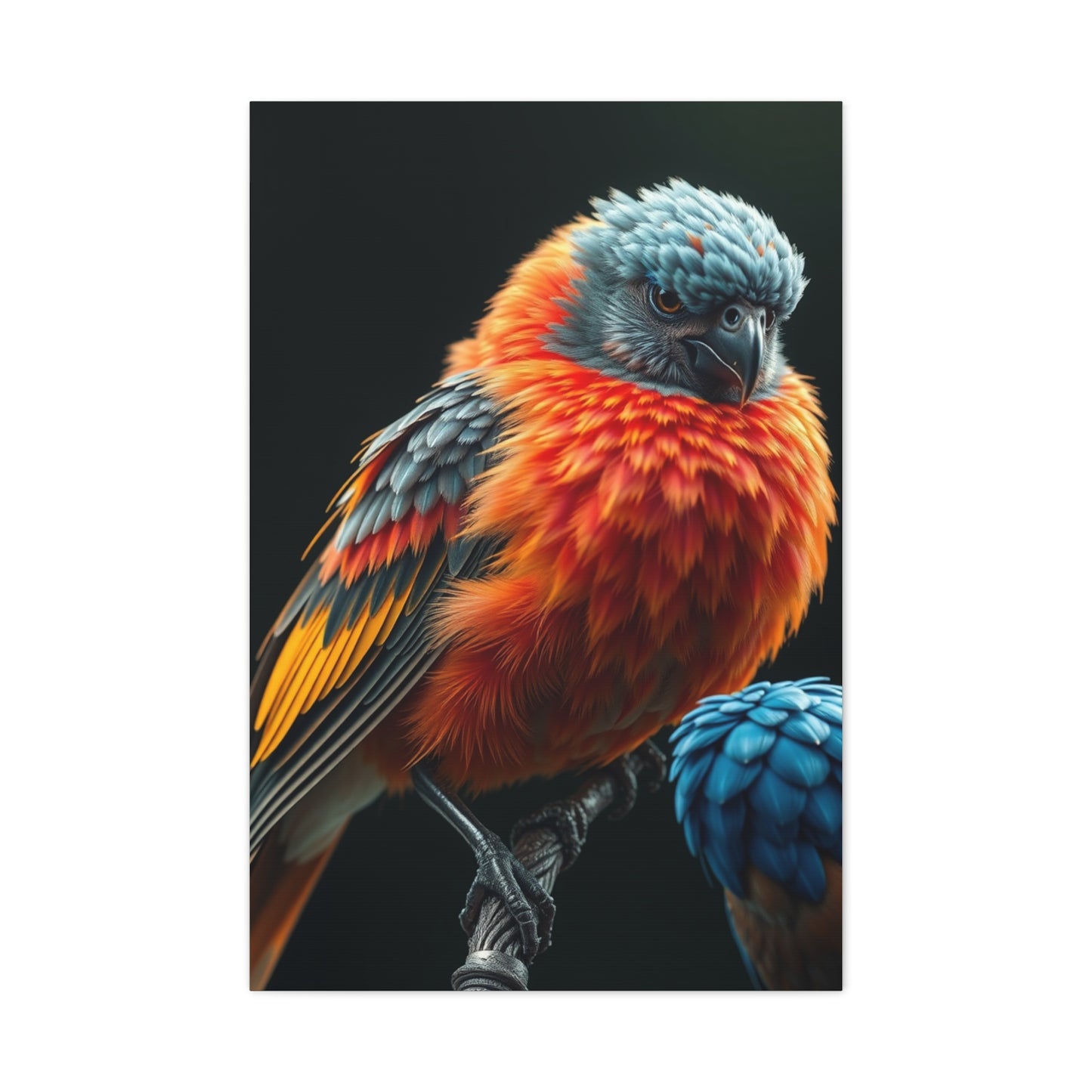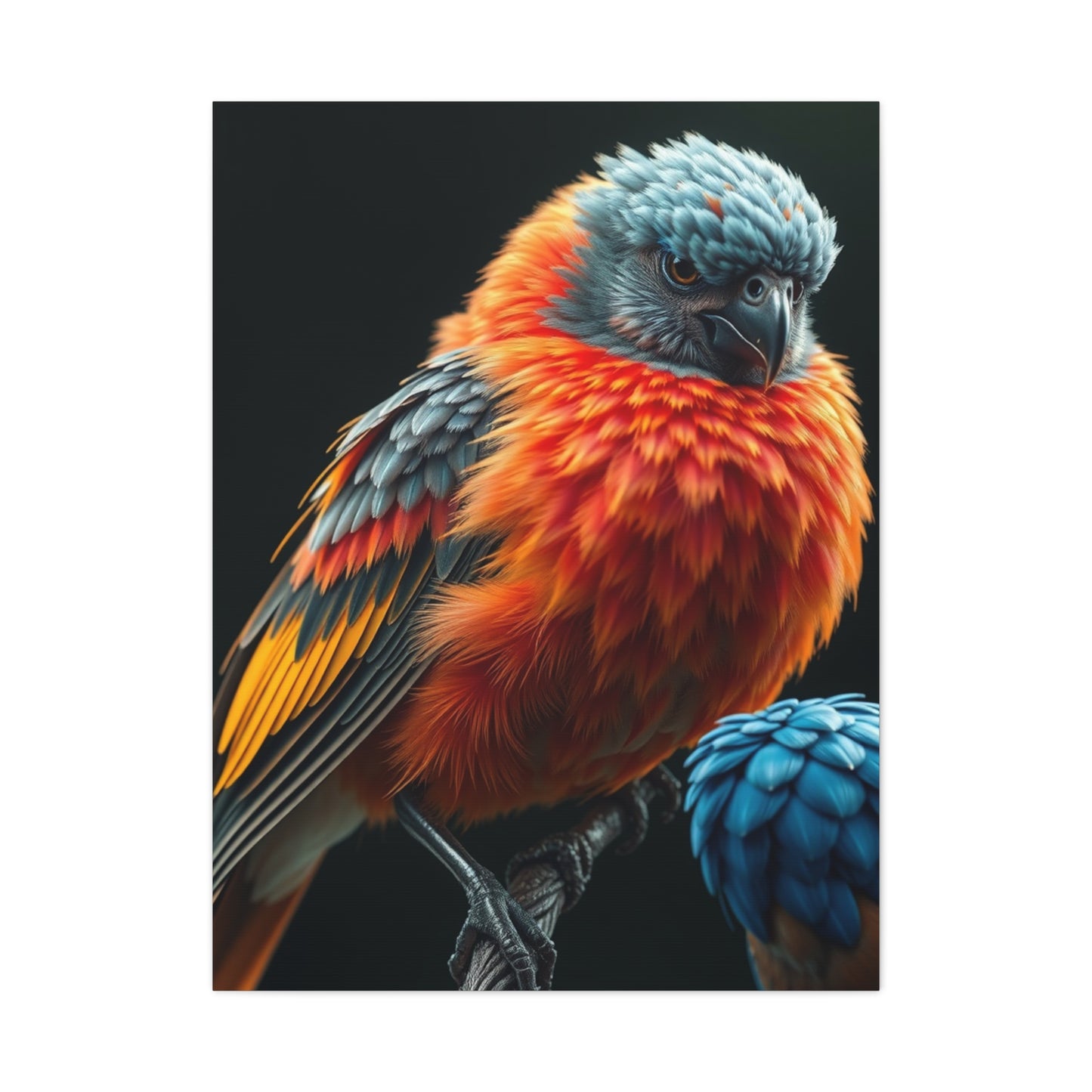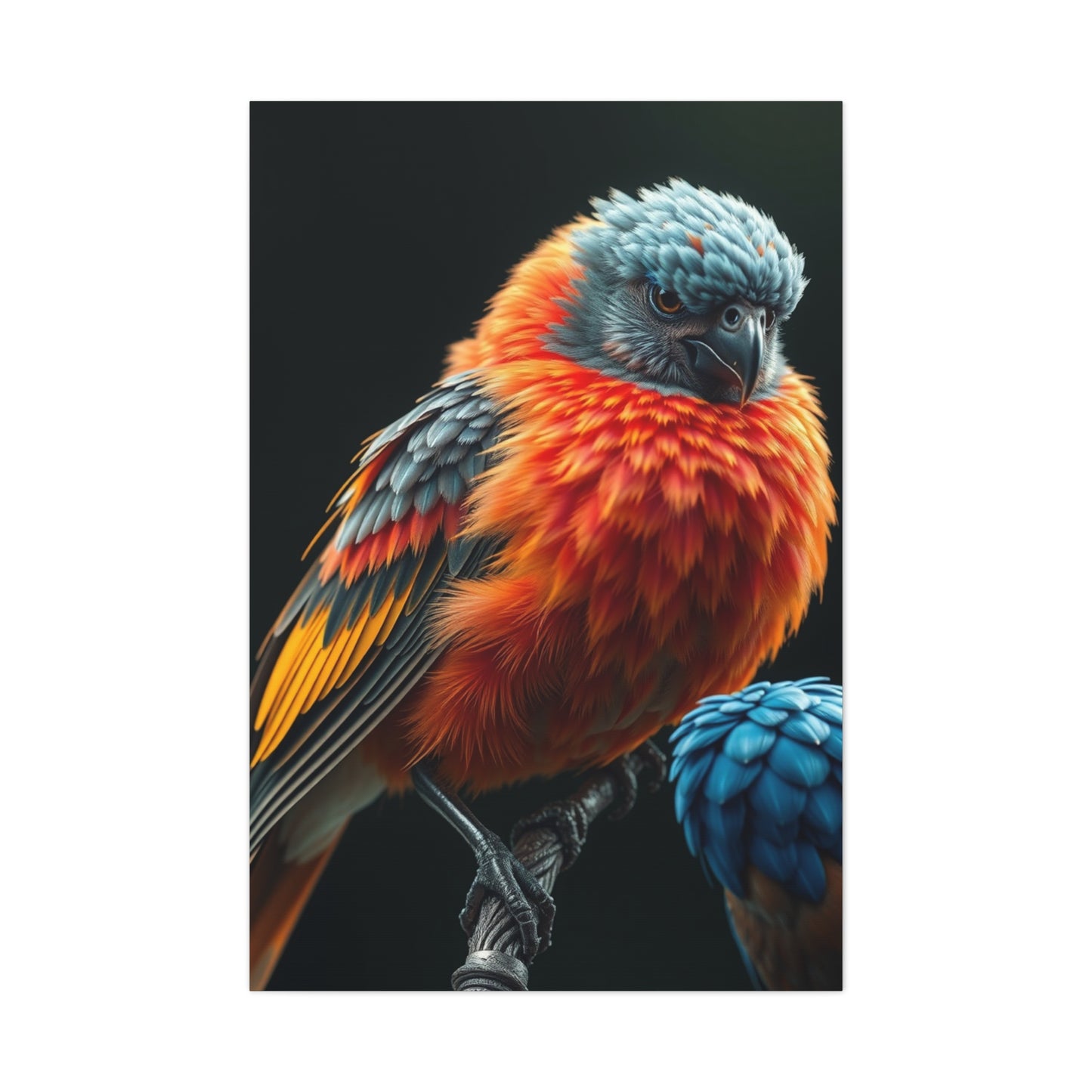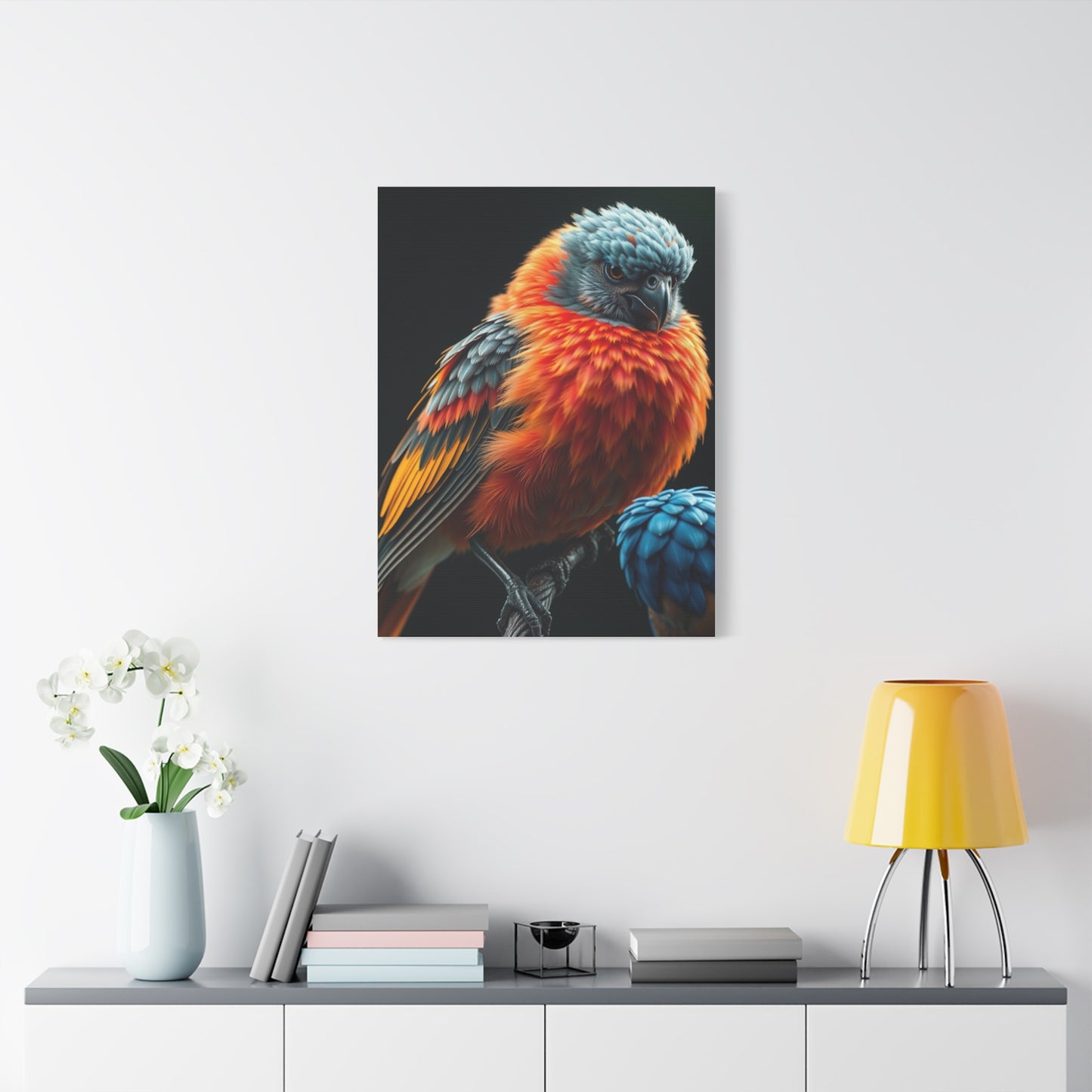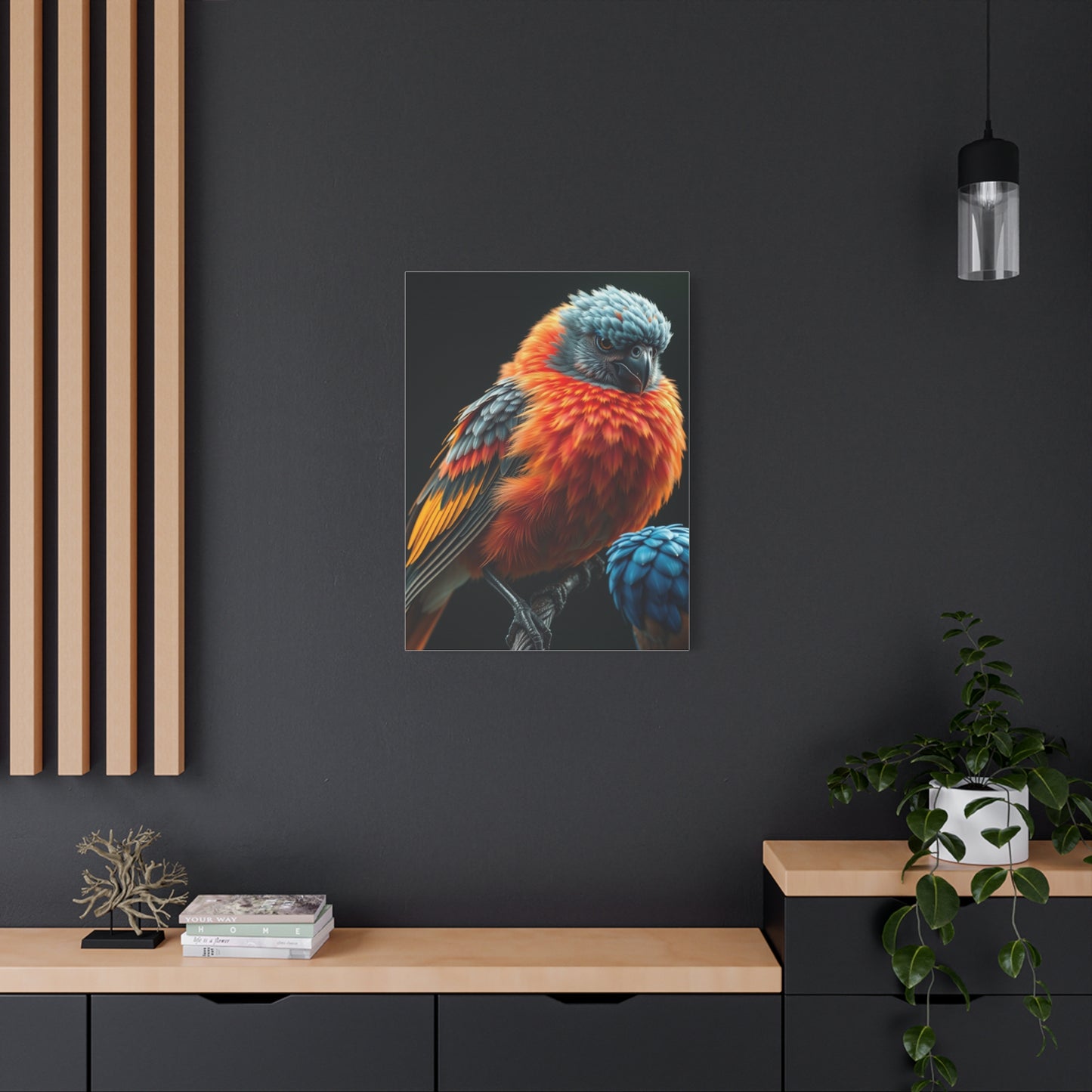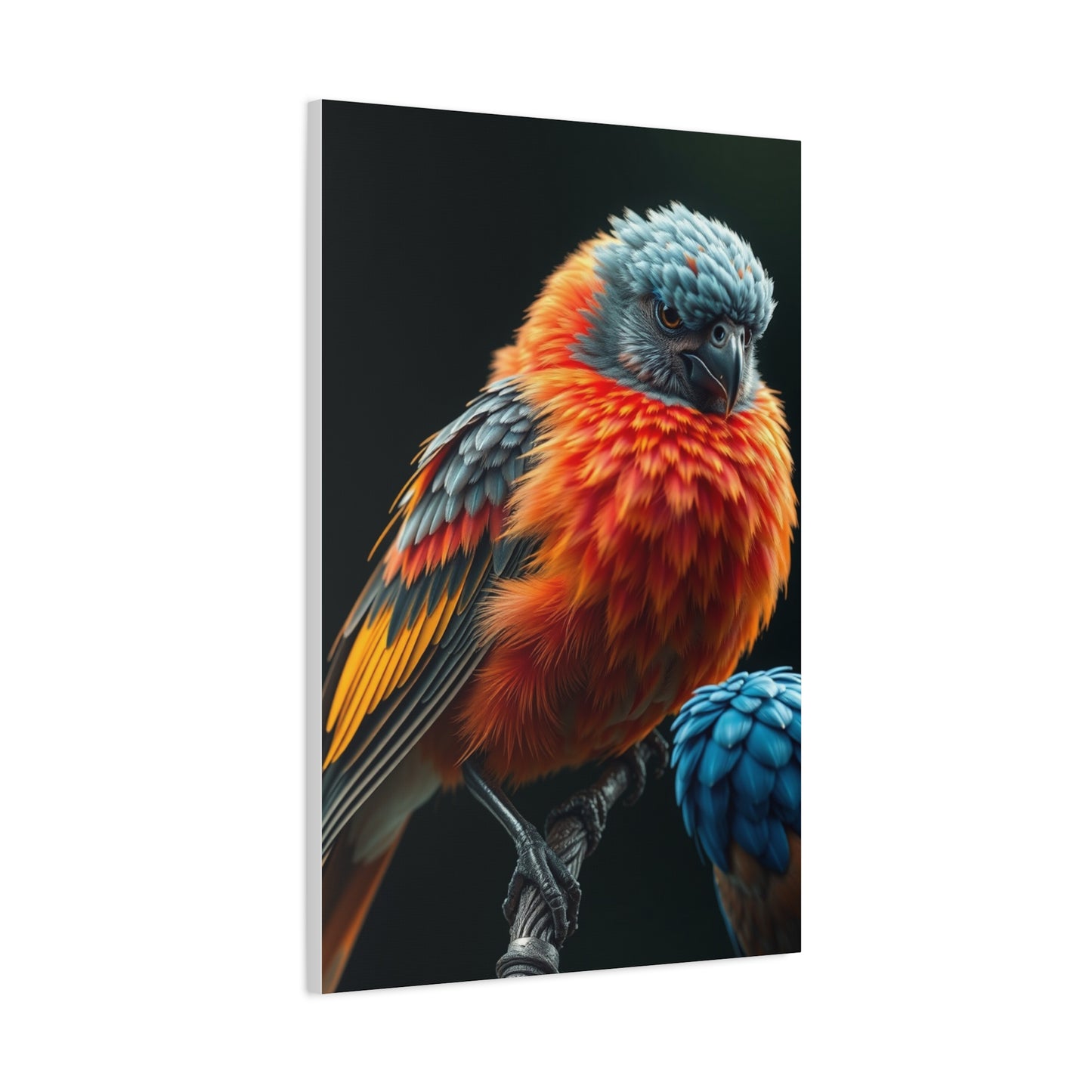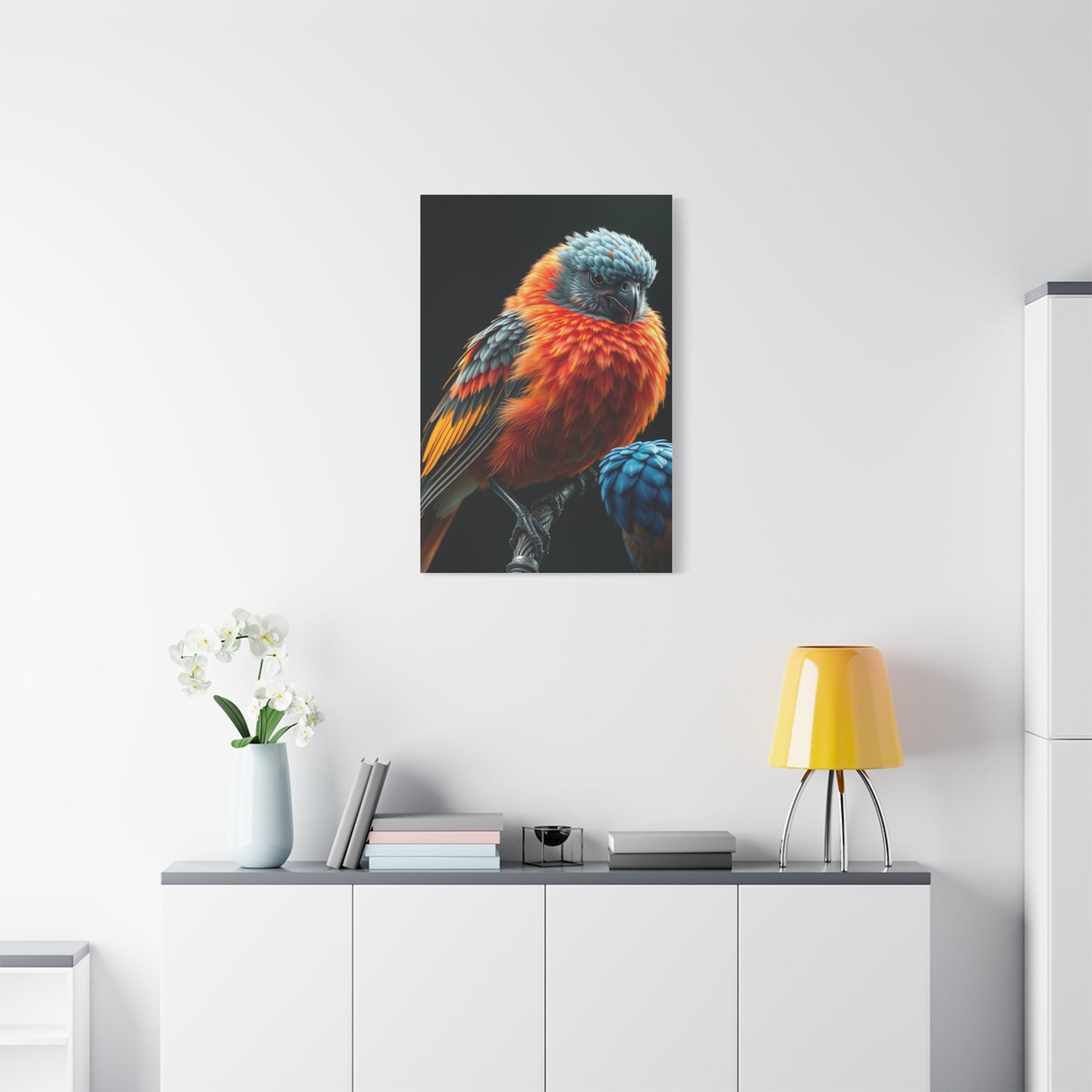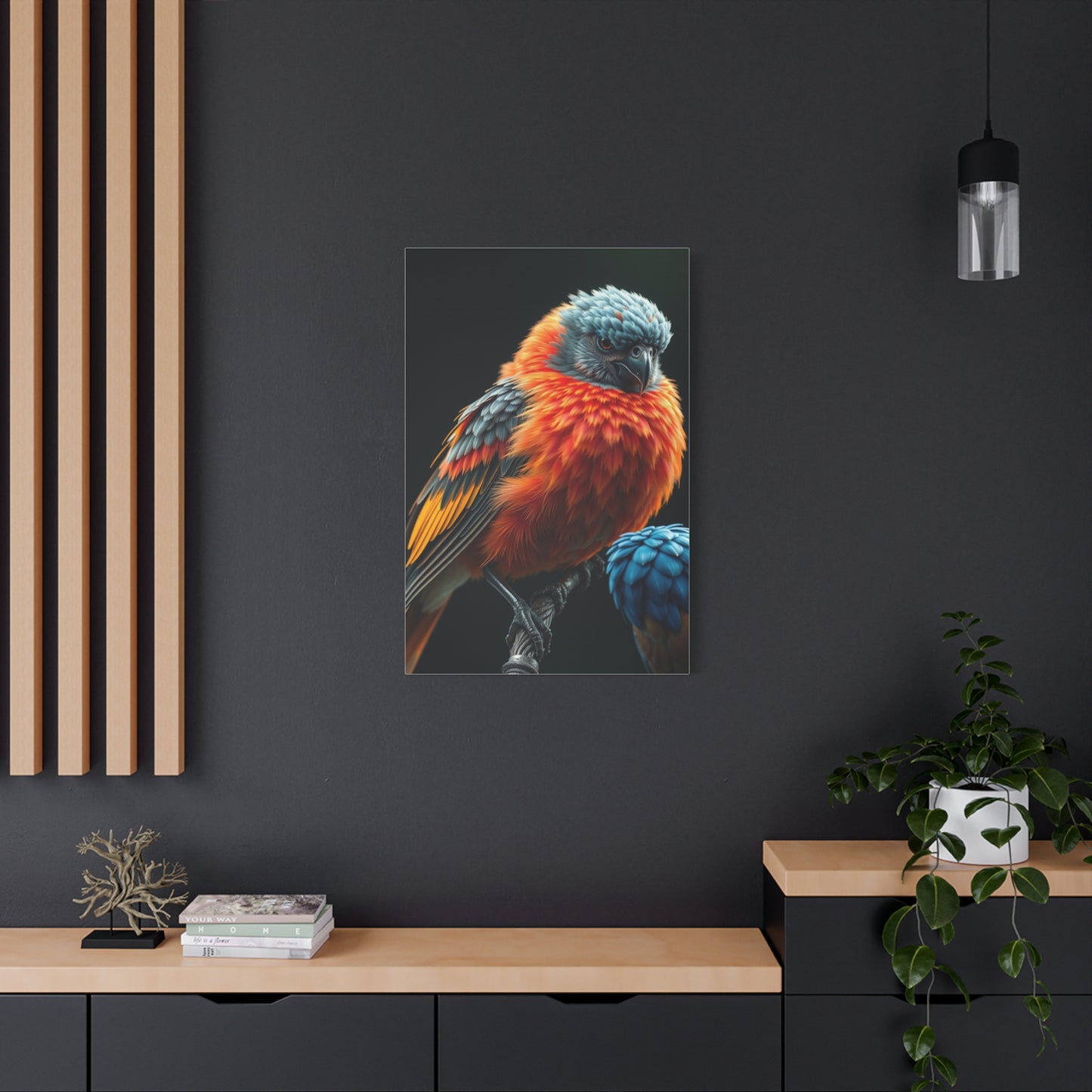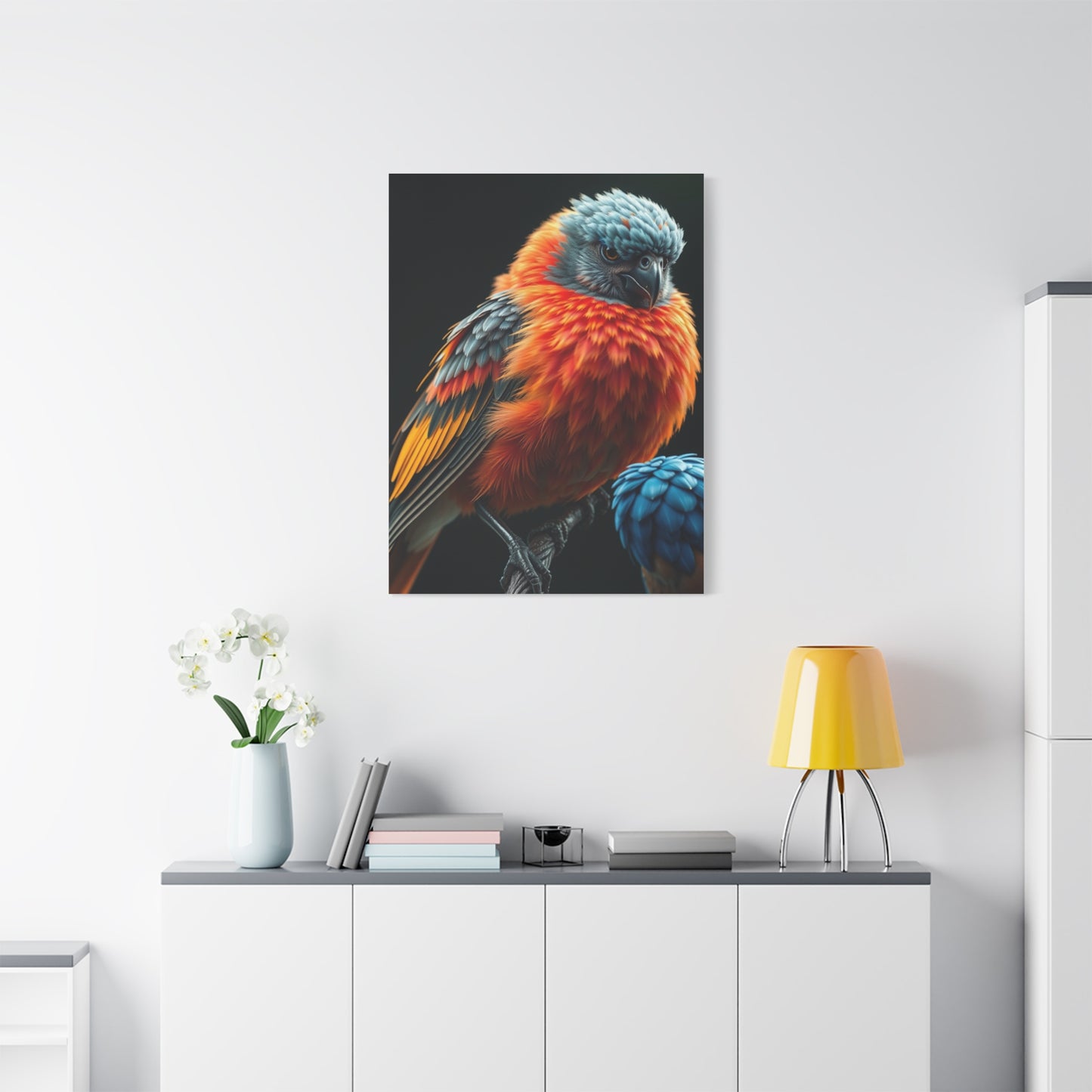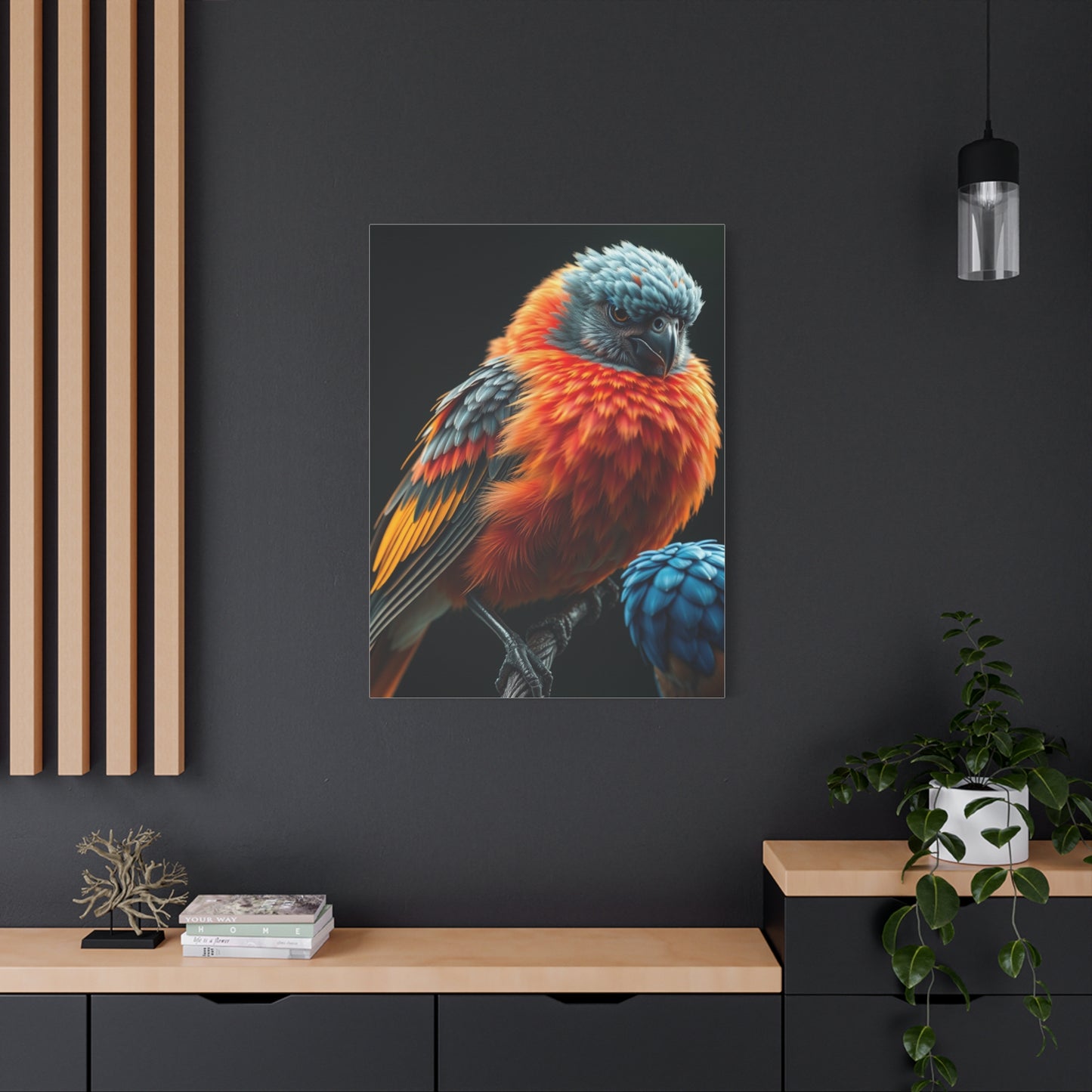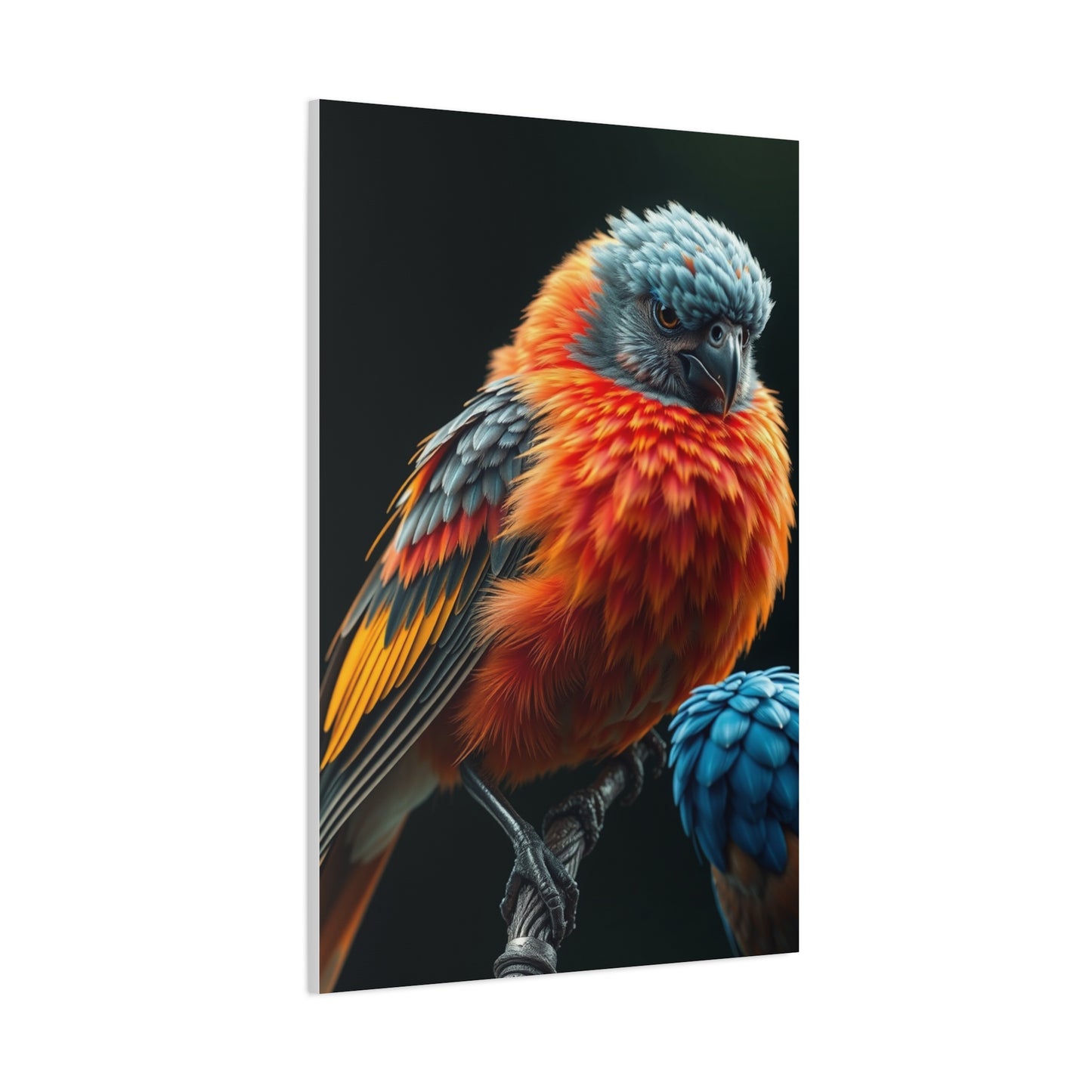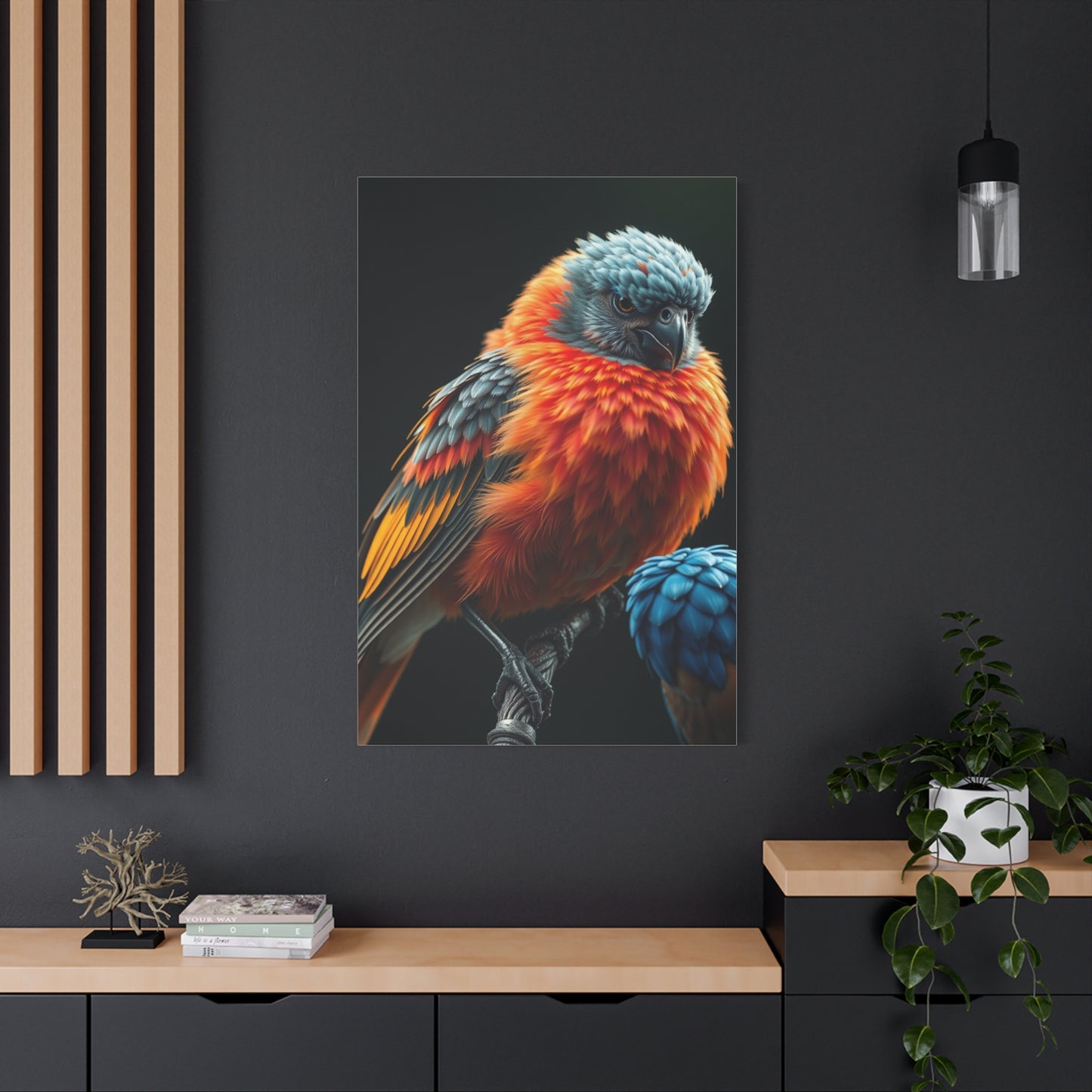Avian Reverie: How Masterpiece Wall Art Captures the Beauty of Birds and Transforms Your Space
The concept of avian reverie masterpiece wall art represents a sophisticated fusion of natural beauty and artistic creativity that has captured the imagination of interior designers and art enthusiasts worldwide. This artistic movement celebrates the ethereal grace of birds through various mediums, creating stunning visual narratives that transform ordinary living spaces into extraordinary sanctuaries of natural wonder. The popularity of bird-themed artwork has surged dramatically in recent years as homeowners seek to bring elements of nature into their indoor environments while maintaining a sense of refined elegance and artistic sophistication.
Bird-inspired wall art encompasses a vast spectrum of styles ranging from hyper-realistic portraits to abstract interpretations that capture the essence and spirit of avian creatures. These masterpieces serve multiple purposes within interior design schemes, functioning simultaneously as focal points, conversation starters, and sources of daily inspiration. The timeless appeal of feathered subjects makes them versatile additions to virtually any decorating style, from traditional to contemporary, rustic to minimalist, and everything in between.
Understanding the Artistic Appeal of Bird-Themed Wall Decorations
The enduring fascination with avian subjects in visual arts stems from humanity's longstanding relationship with birds throughout history. These winged creatures have symbolized freedom, transcendence, wisdom, and spiritual awakening across countless cultures and civilizations. When incorporated into home decor, bird imagery carries these profound meanings while simultaneously adding visual interest through the natural beauty of feathers, the dynamic quality of flight, and the diverse color palettes found throughout the avian kingdom.
Artists who specialize in bird-themed creations draw inspiration from the remarkable diversity found among the world's estimated ten thousand bird species. Each species offers unique characteristics that translate beautifully into artistic representation. The iridescent plumage of hummingbirds creates opportunities for exploring light and color in ways that captivate viewers. The noble bearing of raptors conveys strength and majesty that resonates with those seeking powerful imagery. Songbirds evoke feelings of joy and harmony through their delicate features and cheerful associations. Water birds demonstrate grace and serenity that brings calming energy to interior spaces.
The technical challenges involved in capturing avian subjects push artists to develop exceptional skills in rendering texture, movement, and anatomical accuracy. Feathers present particularly complex structures that require careful observation and meticulous execution to portray convincingly. The way light interacts with plumage creates subtle color variations and highlights that demand sophisticated understanding of color theory and painting techniques. Wings in flight necessitate knowledge of anatomy and movement to depict believably. These artistic challenges result in works that showcase tremendous technical proficiency while celebrating natural beauty.
Exploring Different Artistic Styles in Avian Wall Art
The world of bird-themed wall art encompasses numerous artistic approaches, each offering distinct aesthetic qualities and emotional resonances. Realistic representations strive for photographic accuracy, documenting every feather detail and anatomical nuance with scientific precision. These works appeal to nature enthusiasts and those who appreciate technical virtuosity in art. They often serve educational purposes while simultaneously functioning as stunning decorative elements that bring the outdoors inside.
Impressionistic bird paintings take a looser approach, suggesting form and movement through expressive brushwork and strategic color placement. This style captures the feeling and energy of avian subjects rather than rendering every detail explicitly. The resulting works possess a dreamlike quality that evokes emotional responses and invites viewers to engage their imagination. Impressionistic pieces often incorporate vibrant color palettes and dynamic compositions that energize interior spaces.
Abstract interpretations of bird themes push artistic expression into more conceptual territory, using avian forms as starting points for explorations of color, shape, and composition. These works might simplify bird silhouettes into geometric shapes, explode traditional forms into fragmented arrangements, or dissolve recognizable features into pure color and texture. Abstract bird art appeals to contemporary sensibilities and works beautifully in modern interior design schemes where bold artistic statements are desired.
Vintage and antique bird illustrations represent another popular category, drawing from the rich tradition of ornithological documentation and natural history illustration. These pieces often feature the scientific illustration style developed during the eighteenth and nineteenth centuries, characterized by precise rendering against neutral backgrounds. Reproductions of famous ornithological plates by renowned naturalist artists bring historical significance and classical elegance to contemporary homes. The muted color palettes and aged patinas of vintage bird prints create sophisticated, timeless looks that complement traditional and transitional decorating styles.
Selecting the Perfect Avian Artwork for Your Space
Choosing appropriate bird-themed wall art requires careful consideration of multiple factors that influence how the piece will function within your specific environment. The scale of the artwork relative to the wall space and surrounding furnishings plays a crucial role in achieving visual balance. Oversized pieces make bold statements and can anchor entire room designs, while smaller works contribute to gallery wall arrangements or add finishing touches to intimate spaces. Understanding the principle of proportion helps ensure that artwork neither overwhelms nor gets lost within its setting.
Color coordination between the artwork and existing interior palette determines how seamlessly the piece integrates into the overall design scheme. Artwork featuring colors already present in the room creates cohesive, harmonious looks. Alternatively, introducing new accent colors through bird art can refresh tired color schemes and add visual interest. Consider both the dominant colors in the plumage depicted and any background elements when evaluating how a piece will work with your furnishings and wall colors.
The mood and energy conveyed by different bird subjects should align with the atmosphere you wish to create in each space. Peaceful scenes of shore birds or waterfowl suit bedrooms and quiet sitting areas where relaxation is paramount. Dynamic images of birds in flight bring energy and movement to active spaces like home offices and exercise rooms. Colorful tropical species add vibrancy and warmth to social areas. Considering the psychological impact of different subjects ensures your artwork contributes positively to the room's intended function.
Artistic style should complement rather than clash with your existing decorating approach. Contemporary spaces benefit from modern interpretations and abstract treatments of avian themes. Traditional homes call for classical approaches including realistic renderings and vintage ornithological prints. Eclectic interiors offer flexibility to mix various styles, creating collected looks that reflect diverse artistic interests. Maintaining some stylistic consistency helps rooms feel intentionally designed rather than randomly assembled.
The Psychology of Color in Bird-Themed Art
Color psychology plays a significant role in how bird artwork affects the emotional tone of interior spaces. The natural color palettes found in avian plumage offer remarkable diversity, from subtle earth tones to brilliant jewel tones, providing options suitable for any psychological effect desired. Understanding how different colors influence mood and perception helps in selecting pieces that will enhance the quality of daily life within your home.
Blue tones prevalent in many bird species evoke feelings of calm, serenity, and stability. Birds like blue jays, bluebirds, and peacocks feature striking blue plumage that translates into soothing artwork appropriate for bedrooms, bathrooms, and meditation spaces. The cooling quality of blue creates visual relief in warm climates or sun-drenched rooms. Different shades of blue offer varying effects, with deeper navy tones suggesting sophistication and authority while lighter sky blues promote openness and freedom.
Red and orange hues found in cardinals, tanagers, and various exotic species generate warmth, energy, and excitement. These stimulating colors raise perceived temperature and activity levels in spaces, making them excellent choices for social areas, dining rooms, and creative workspaces. The passionate quality of red creates focal points that draw attention and spark conversation. When used thoughtfully, warm-toned bird art can invigorate spaces that might otherwise feel cold or impersonal.
Green tones present in parrots, hummingbirds, and many woodland birds bring nature's most prevalent color indoors, creating immediate connections to the natural world. Green promotes balance, harmony, and renewal, making it universally appealing and appropriate for virtually any room. The psychological association between green and growth makes bird art featuring these tones particularly suitable for spaces dedicated to personal development, health, and wellness. Different green shades offer various effects, from the sophisticated elegance of deep emerald to the fresh vitality of spring leaf green.
Yellow and gold tones emanate happiness, optimism, and mental clarity. Birds displaying these cheerful colors inject sunshine into interior spaces regardless of actual lighting conditions. The uplifting quality of yellow makes it particularly effective in kitchens, breakfast nooks, and home offices where positive energy supports daily activities. Golden tones add luxury and warmth while maintaining the cheerful associations of brighter yellows. Artwork featuring goldfinches, canaries, and other yellow birds creates instant mood elevation.
Creating Gallery Walls with Avian Masterpieces
Gallery walls featuring collections of bird-themed artwork create visually dynamic displays that showcase personal taste and create compelling focal points. This approach allows for combining multiple pieces into cohesive arrangements that have greater impact than individual artworks hung in isolation. Successfully executing gallery wall designs requires planning and attention to compositional principles to achieve professional-looking results.
Begin by selecting a unifying element that ties disparate pieces together into a coherent collection. This might be a consistent subject matter focusing exclusively on birds, a shared color palette that creates visual harmony, similar framing styles that provide structural unity, or a particular artistic medium like watercolors or photography. Having a clear unifying concept prevents gallery walls from appearing random or cluttered.
Planning the layout before committing to wall placement prevents frustration and unnecessary holes from trial and error. Create templates of each frame using paper cut to exact sizes, then experiment with different arrangements on the floor or by temporarily taping paper templates to the wall. Consider various organizational approaches including symmetrical grids that feel orderly and intentional, salon-style arrangements that appear collected over time, horizontal or vertical linear compositions that lead the eye directionally, or organic asymmetrical layouts that feel more casual and contemporary.
Maintain consistent spacing between frames to create visual rhythm and prevent the collection from appearing chaotic. Professional galleries typically use two to three inch spacing, though personal preference and the specific pieces involved may call for adjustments. Smaller works often benefit from closer spacing that creates unified clusters, while larger pieces need more breathing room to maintain their individual presence.
Consider the relationship between the gallery wall and surrounding architectural features and furnishings. Gallery arrangements should relate proportionally to the furniture groupings they accompany, generally spanning two-thirds to three-quarters of the sofa or table width below. Vertical arrangements work well in narrow wall spaces like hallways and between windows, while horizontal spreads suit spaces above low furnishings. Centering the overall arrangement rather than individual pieces creates professional results when working with asymmetrical layouts.
Incorporating Vintage Ornithological Prints into Modern Interiors
Vintage ornithological illustrations represent a treasure trove of artistic material that brings historical significance and sophisticated beauty to contemporary homes. These scientific illustrations, originally created to document and study bird species, have transcended their utilitarian origins to become highly desirable decorative art. The precise rendering, elegant compositions, and aged patinas of authentic vintage prints create timeless appeal that bridges traditional and modern decorating styles.
The golden age of ornithological illustration spanned the eighteenth through early twentieth centuries when naturalists employed skilled artists to document bird species for scientific study. Famous names from this era include John James Audubon whose monumental works depicted North American birds in dynamic, lifelike poses, John Gould who created numerous illustrated volumes covering bird species worldwide, and Elizabeth Gould whose watercolors brought her husband's ornithological studies to vibrant life. Original prints from these renowned illustrators command high prices, but high-quality reproductions make this aesthetic accessible to broader audiences.
Incorporating vintage bird prints into modern interiors creates compelling juxtapositions between old and new that add depth and character to contemporary spaces. The formal quality and neutral backgrounds typical of ornithological illustrations provide visual calm that balances the clean lines and minimal ornamentation of modern design. Grouping multiple vintage prints in matching frames creates sophisticated focal points that demonstrate curatorial intention. The subdued, naturalistic color palettes of aged illustrations complement the neutral foundations prevalent in contemporary interiors.
Framing choices significantly impact how vintage ornithological prints function within modern contexts. Simple, clean-lined frames in black, white, or natural wood keep focus on the illustrations while maintaining contemporary sensibilities. Wide mats in cream or soft white separate the aged paper from modern surroundings while adding importance to smaller prints. Conservation framing using UV-protective glass preserves valuable originals or quality reproductions from deterioration caused by light exposure. Floating the prints within deep frames creates dimensional interest while honoring their status as collectible objects.
The Role of Bird Symbolism in Art and Culture
Birds have carried symbolic significance across cultures throughout human history, and understanding these associations adds layers of meaning to bird-themed artwork. Different species represent specific qualities, virtues, or spiritual concepts that can be intentionally selected to support personal values or aspirations. Incorporating symbolically meaningful bird imagery creates artwork that functions beyond mere decoration to serve as daily reminders of important ideals and intentions.
Owls symbolize wisdom, intuition, and knowledge across numerous traditions, making them popular subjects for home offices, libraries, and study areas. Their nocturnal nature associates them with mystery and the unconscious mind, appealing to those interested in depth psychology and spiritual exploration. The penetrating gaze characteristic of owl portraits creates powerful presence that commands attention and respect.
Eagles represent strength, courage, leadership, and transcendence in many cultures, particularly Native American traditions where eagles serve as sacred messengers between earthly and spiritual realms. The majestic bearing and powerful flight capabilities of eagles translate into artwork that inspires confidence and determination. Eagle imagery often appears in spaces associated with achievement and ambition like home offices and executive spaces.
Doves universally symbolize peace, love, purity, and spiritual connection, making them appropriate for meditation spaces, bedrooms, and any environment where serenity is desired. The gentle nature and soft coloring of doves create artwork that soothes rather than stimulates, contributing to restful, contemplative atmospheres. Paired doves specifically represent romantic love and partnership, making them popular subjects for master bedrooms and anniversary gifts.
Phoenixes embody transformation, renewal, and triumph over adversity through their mythological cycle of death and rebirth from flames. Though legendary rather than actual birds, phoenix imagery resonates with anyone navigating significant life transitions or recovering from challenges. The dramatic, fiery iconography associated with phoenixes creates visually striking artwork that makes powerful statements about resilience and personal growth.
Hummingbirds represent joy, adaptability, and living in the present moment across various cultural contexts. Their remarkable hovering ability and iridescent beauty translate into delicate, jewel-like artwork that adds color and lightness to interiors. The tiny size and rapid movement of hummingbirds create associations with energy efficiency and making the most of resources, appealing to those who value sustainability and mindful living.
Techniques for Creating Custom Avian Art
Creating original bird-themed artwork offers opportunities for personal expression while developing artistic skills. Various mediums and techniques allow artists at different skill levels to produce meaningful pieces that reflect individual vision and aesthetic preferences. Understanding fundamental approaches to different artistic methods helps aspiring creators choose directions aligned with their interests and abilities.
Watercolor painting suits bird subjects particularly well due to the medium's ability to create soft, luminous effects that capture the delicate quality of feathers and the atmospheric conditions in which birds exist. The transparent nature of watercolor allows for building colors gradually through successive washes, creating depth and dimension. Wet-into-wet techniques produce soft edges and blended colors appropriate for suggesting plumage textures, while wet-on-dry approaches enable sharper definition for details like eyes and beaks. Mastering water control and understanding pigment behavior are fundamental skills for successful watercolor bird paintings.
Acrylic painting offers versatility and forgiveness that make it accessible to beginners while remaining capable of sophisticated effects in experienced hands. Acrylics can be used thinly to mimic watercolor effects or applied heavily for impasto textures. The fast drying time allows for rapid layering and corrections without the extended waiting periods required by oils. Depicting birds in acrylics benefits from understanding value structure and color mixing to create convincing forms and realistic plumage colors. Starting with toned grounds establishes overall value ranges that make subsequent color applications more effective.
Pen and ink techniques create striking bird illustrations with strong graphic quality and precise detail. Cross-hatching and stippling build values gradually while creating interesting surface textures. The permanent, unforgiving nature of ink requires confidence and planning, often working from light pencil underdrawings that establish proportions and placement before committing to ink. Combining ink with watercolor washes creates mixed media pieces that balance linear precision with colorful spontaneity.
Digital art tools offer unlimited experimentation without material costs or cleanup requirements. Graphics tablets and stylus pens enable drawing directly into digital painting programs with natural, pressure-sensitive control. Digital workflows allow for easy corrections, color adjustments, and composition refinements impossible in traditional media. Artists can work in styles ranging from photorealistic digital paintings to vector-based graphic illustrations. Understanding layer management and digital brushes extends traditional artistic skills into new territories.
Collage techniques create bird imagery through assembled paper, fabric, or found materials. This approach suits abstract and semi-abstract representations where suggesting form through color, pattern, and texture takes precedence over realistic detail. Collecting interesting papers, magazine clippings, sheet music, and other materials with appropriate colors and patterns provides raw materials for avian collages. Planning compositions through loose arrangement before permanent adhesion allows for experimentation and refinement.
Lighting Considerations for Displaying Bird Art
Proper lighting dramatically affects how artwork appears and functions within interior spaces. Bird-themed pieces benefit from thoughtful illumination that enhances colors, reveals textures, and creates appropriate atmosphere while protecting valuable works from damage caused by excessive light exposure. Understanding basic lighting principles helps maximize the impact of avian artwork while ensuring its longevity.
Natural daylight provides the most accurate color rendering but varies throughout the day and with weather conditions. Positioning artwork to receive indirect natural light avoids glare and reduces fading risks while providing pleasant, shifting illumination that keeps displays dynamic. East-facing walls receive gentle morning light appropriate for bedrooms and breakfast areas, while north-facing positions offer consistent, cool light favored by artists and galleries. Avoiding direct sunlight exposure protects artwork from ultraviolet damage that causes irreversible fading and deterioration.
Artificial lighting offers consistent, controllable illumination unaffected by time of day or weather. Several approaches work well for artwork display, each with distinct characteristics and applications. Picture lights mounted directly above or below frames create focused illumination that draws attention to specific pieces while adding architectural interest. These dedicated fixtures work particularly well for highlighting signature works or creating focal points in living rooms and dining areas.
Track lighting systems provide flexibility to illuminate multiple artworks from adjustable fixtures mounted on ceiling tracks. This approach suits gallery wall arrangements where multiple pieces need individual attention. Positioning track heads at thirty-degree angles from the wall prevents glare while evenly illuminating surfaces. Choosing fixtures with narrow beam spreads concentrates light on artwork without spilling onto surrounding walls.
Recessed ceiling fixtures create ambient illumination that includes artwork as part of overall room lighting rather than isolating pieces as special subjects. This integrated approach suits casual spaces and creates comfortable living environments where art contributes to atmosphere without dominating attention. Directional trim options allow aiming recessed lights toward specific wall areas for subtle highlighting.
LED technology has revolutionized artwork lighting by providing energy-efficient illumination with minimal heat output and excellent color rendering. Quality LED fixtures designed for artwork display emit full spectrum light that reveals colors accurately without the warm yellow cast of incandescent bulbs or cool blue tint of older fluorescent lighting. The low heat production protects artwork from temperature-related damage while reducing cooling costs.
Pairing Bird Art with Interior Design Styles
Bird-themed artwork adapts remarkably well to diverse decorating approaches, though different styles call for distinct treatments that honor their particular aesthetic principles. Understanding how avian imagery functions within various design contexts ensures successful integration that enhances rather than conflicts with overall interior schemes.
Traditional interiors characterized by classic furnishings, rich fabrics, and historical references pair beautifully with realistic bird paintings in ornate gilded frames. Ornithological prints featuring scientific precision and formal compositions complement the refined sensibility of traditional spaces. Oil paintings with dark, atmospheric backgrounds and dramatic lighting suit the substantial quality of traditional furnishings. Groupings of smaller pieces in matching elaborate frames create collected looks appropriate for traditional wall arrangements.
Contemporary design with its emphasis on clean lines, minimal ornamentation, and edited compositions calls for equally streamlined bird artwork. Abstract interpretations, simplified silhouettes, and graphic treatments align with contemporary aesthetics better than traditional realistic renderings. Large-scale pieces in simple floating frames create the bold, uncluttered focal points that anchor contemporary rooms. Photography featuring striking bird portraits against stark backgrounds brings natural subjects into contemporary contexts while maintaining the clarity and directness valued in modern design.
Farmhouse style with its casual comfort, natural materials, and collected vintage elements provides ideal settings for rustic bird imagery. Weathered frames, distressed finishes, and neutral color palettes coordinate with farmhouse fundamentals. Vintage seed sack graphics featuring chickens and roosters embrace the agricultural references inherent in farmhouse style. Wooden cutouts and metal silhouettes add dimensional interest while maintaining the approachable, unpretentious quality that defines farmhouse interiors.
Coastal decorating celebrates seaside living through palette, imagery, and materials, making shore birds and water birds natural subject choices. Seagulls, pelicans, herons, and sandpipers connect directly to beach environments. Weathered driftwood frames and rope-wrapped borders reinforce coastal themes. Soft blues, sandy neutrals, and crisp whites typical of coastal palettes appear naturally in water bird plumage. Combining bird imagery with other coastal elements like shells, coral, and nautical artifacts creates cohesive beach house aesthetics.
Bohemian interiors characterized by layered patterns, global influences, and artistic expression welcome exotic bird imagery celebrating the fantastic color and form found in tropical species. Parrots, toucans, birds of paradise, and peacocks provide the vibrancy and drama that suit bohemian sensibilities. Mixing various artistic styles and mediums aligns with the eclectic, collected quality of boho spaces. Incorporating bird art alongside textiles, plants, and artifacts from various cultures creates the rich, personal environments that define bohemian style.
The Therapeutic Benefits of Nature-Inspired Art
Incorporating bird-themed artwork into living spaces offers psychological and emotional benefits beyond aesthetic improvement. Research into environmental psychology and biophilic design demonstrates that visual connections to nature support mental health, reduce stress, and enhance overall wellbeing. Bird imagery specifically carries associations that promote particular therapeutic effects worth considering when selecting artwork for different spaces.
The calming influence of nature imagery helps counteract the stress of modern life characterized by constant connectivity, rapid pace, and predominantly artificial environments. Viewing representations of natural subjects triggers parasympathetic nervous system responses that lower blood pressure, reduce muscle tension, and promote relaxation. Bird artwork brings these benefits indoors, particularly valuable in urban environments where access to actual nature may be limited. Bedrooms, home offices, and any spaces where stress reduction is desirable benefit from the soothing presence of avian imagery.
The symbolic associations birds carry regarding freedom, transcendence, and spiritual connection support contemplative practices and personal reflection. Meditation spaces, yoga rooms, and quiet sitting areas gain additional meaning through bird artwork that reinforces intentions for these dedicated spaces. The upward movement inherent in many bird images, particularly those depicting flight, creates subtle directional energy that elevates mood and perspective. This quality makes bird art particularly appropriate for spaces where you seek inspiration or spiritual connection.
Color therapy principles suggest that the natural hues found in bird plumage can be intentionally selected to support emotional and psychological needs. Spaces where concentration and mental clarity are paramount benefit from artwork featuring birds with blue plumage, which promotes focus and cognitive function. Social areas where warmth and connection are desired call for species with red and orange tones that stimulate conversation and emotional expression. Healthcare environments increasingly incorporate nature imagery including birds to reduce patient anxiety and accelerate healing processes.
The simple pleasure of beauty should not be underestimated as a contributor to quality of life. Surrounding yourself with artwork that you find genuinely beautiful creates opportunities for micro-moments of appreciation throughout each day. These brief encounters with beauty accumulate into significant positive effects on mood and outlook. Bird art with its inherent natural beauty and endless variety offers particularly rich sources of visual pleasure that reward repeated viewing with new discoveries of color, form, and detail.
Protecting and Preserving Bird Artwork
Artwork represents investment of money, time, and emotional significance, making proper care essential for maintaining its beauty and value over time. Bird-themed pieces face the same conservation challenges as any artwork, requiring attention to environmental factors that cause deterioration. Understanding basic preservation principles extends the life of cherished pieces while maintaining their appearance.
Light exposure presents the most significant threat to artwork longevity, causing irreversible fading and discoloration. Ultraviolet radiation proves particularly damaging, breaking down pigments and paper fibers. Displaying artwork away from direct sunlight provides basic protection, while UV-filtering glazing in frames blocks harmful wavelengths even in indirectly lit positions. Conservation-grade acrylic and specialty glass options filter ninety-nine percent of UV light while remaining virtually invisible. Though more expensive than standard glazing, UV protection proves worthwhile for valuable or irreplaceable pieces.
Humidity fluctuations cause paper to expand and contract, creating stress that manifests as warping, buckling, and eventual deterioration. Maintaining stable relative humidity between forty and fifty percent protects works on paper from moisture damage. Avoiding placement near humidifiers, bathrooms, kitchens, and exterior walls subject to temperature fluctuations prevents humidity-related problems. In particularly dry climates, whole-house humidification protects artwork along with furnishings and personal comfort.
Temperature extremes and fluctuations accelerate chemical reactions that break down materials. Maintaining moderate, stable temperatures between sixty-five and seventy-five degrees Fahrenheit creates optimal conditions. Avoiding placement above heat sources like fireplaces and radiators prevents exposure to excessive warmth. Conversely, avoiding exterior walls in cold climates prevents exposure to temperature extremes.
Proper framing provides physical protection while creating microenvironments that buffer artwork from atmospheric fluctuations. Mats separate artwork from glazing, preventing moisture condensation from causing sticking and mold growth. Acid-free materials throughout framing packages prevent chemical degradation from contact with acidic components. Sealed backing papers protect from dust, insects, and pollutants entering from behind. Quality framing represents investment in preservation that pays dividends through extended artwork life.
Regular maintenance prevents minor issues from becoming serious problems. Dusting frames and glazing carefully with soft, clean cloths removes accumulation that can damage finishes and attract pests. Inspecting artwork periodically for signs of problems like fading, foxing, or pest damage allows for early intervention. Professional conservation assessment and treatment addresses problems beyond the scope of home care, ensuring valuable pieces receive appropriate specialized attention.
Seasonal Rotation and Refreshing Your Display
Rotating artwork seasonally creates dynamic living environments that respond to changing natural cycles while protecting pieces from excessive light exposure. This approach particularly suits bird-themed collections where different species associate with specific seasons, allowing displays that reflect the natural world outside. Strategic rotation maintains freshness and renewed appreciation while equalizing light exposure across collections.
Spring rotation naturally features songbirds returning from migration, nesting behaviors, and the renewal of life after winter dormancy. Robins, bluebirds, and warblers embody spring's hopeful energy. Pastel color palettes and flowering branch settings reinforce seasonal connections. Light, airy presentation styles suit spring's fresh, optimistic character. Removing heavy winter pieces creates visual relief that parallels nature's transition from dormancy to active growth.
Summer displays celebrate the abundance and vitality of warm months through vibrant colors and dynamic compositions. Hummingbirds, tanagers, and tropical species bring the heat and intensity of summer indoors. Bold, saturated colors and full, lush settings reflect summer's peak energy. Beach and water birds connect to summer vacation associations and leisure activities. The longer days and stronger light of summer allow for displaying works that might appear too dark or heavy in other seasons.
Autumn artwork reflects harvest, preparation, and the transition toward dormancy. Game birds, waterfowl preparing for migration, and species gathering food for winter create appropriate seasonal connections. Warm earth tones, russet foliage, and golden light characterize autumn bird art. The contemplative quality of fall lends itself to more serious, thoughtful pieces after summer's exuberance. Textural elements like dried grasses and seed heads add dimensional interest.
Winter displays feature hardy species that remain through cold months along with elegant, spare compositions that reflect the season's stripped-down aesthetic. Cardinals against snow, chickadees at feeders, and owls in bare branches create quintessential winter imagery. Cool color palettes and simplified compositions suit winter's quiet, introspective character. Increased indoor time during winter months makes this ideal season for displaying complex pieces that reward prolonged viewing.
Practical considerations make seasonal rotation feasible even for those with limited storage. Labeling pieces by season during initial organization prevents confusion. Storing artwork flat in acid-free boxes or portfolios protects pieces between displays. Making rotation a scheduled event tied to equinoxes and solstices creates rhythm without requiring constant attention. Photographing arrangements before dismantling provides reference for future installations.
Sourcing Authentic Avian Masterpieces
Acquiring quality bird-themed artwork requires knowledge of various sources and market dynamics. Options range from affordable reproductions to investment-grade originals, each with distinct advantages and considerations. Understanding where and how to find appropriate pieces helps build satisfying collections that meet aesthetic and budgetary requirements.
Original artwork by living artists represents unique, one-of-a-kind pieces that carry the artist's direct creative energy. Art galleries, both physical and online, connect collectors with emerging and established bird artists. Gallery representation provides authentication, provenance documentation, and often includes artist information that adds context to purchases. Prices for originals vary tremendously based on artist reputation, size, medium, and complexity. Emerging artists offer accessible entry points while established names command premium prices reflecting market recognition.
Art fairs and festivals bring multiple artists together, allowing comparison shopping and direct artist interaction. These events range from community-level shows to prestigious affairs attracting international participation. Meeting artists personally, discussing their processes, and sometimes commissioning custom pieces creates meaningful acquisition experiences. Many bird artists participate in wildlife art shows and natural history museum events, providing targeted opportunities for finding specialized work.
Online marketplaces have democratized art acquisition, offering unprecedented access to artists worldwide. Platforms dedicated to original art enable searching by subject, style, price range, and numerous other criteria. Reading artist statements and viewing portfolios helps identify creators whose vision aligns with personal preferences. Buyer protection policies and secure payment systems reduce risks associated with online purchases. The inability to view pieces in person before buying represents the primary drawback, though generous return policies mitigate this concern.
Print-on-demand services make high-quality reproductions of public domain ornithological illustrations and contemporary designs accessible and affordable. Customization options including size, framing, and materials allow personalizing pieces to specific needs. The print quality available through modern digital reproduction technology creates results virtually indistinguishable from originals in many cases. This avenue particularly suits those seeking specific birds or styles for which originals are unavailable or unaffordable.
Antique markets, estate sales, and auctions offer opportunities to acquire vintage bird prints and paintings with historical significance. These sources require knowledge to distinguish genuine antiques from later reproductions. Condition assessment skills help evaluate whether restoration needs affect value and displayability. Provenance research establishes authenticity and can reveal fascinating histories. Competitive bidding at auctions creates excitement but requires disciplined budgeting to avoid overextension.
Commissioning Custom Bird Artwork
Commissioning original artwork creates opportunities for personalized pieces perfectly suited to specific spaces and preferences. This approach results in unique works that carry special meaning beyond ready-made alternatives. Understanding the commission process helps ensure successful collaborations that meet expectations.
Selecting an appropriate artist requires researching portfolios to identify creators whose style, skill level, and subject specialization align with your vision. Artists working primarily in realistic styles may not be suitable for abstract commissions and vice versa. Reviewing completed commissions demonstrates how artists interpret client requests. Reading testimonials reveals working styles and client satisfaction levels. Initial consultations, often provided free, allow discussing projects before commitment.
Communicating vision clearly through reference materials, color preferences, size specifications, and placement context helps artists understand expectations. Providing photos of spaces where artwork will hang shows lighting, scale relationships, and surrounding elements. Sharing examples of other artwork you admire, even if not bird-related, communicates aesthetic preferences. Being specific about must-have elements while allowing creative freedom for other aspects produces the best results. Overly prescriptive direction can stifle artistic interpretation while vague guidance leaves too much room for misalignment.
Commission agreements should address size, medium, subject, timeline, payment structure, revision allowances, and ownership rights. Most artists require deposits before beginning work, with final payment due on completion. Rush fees apply for accelerated timelines. Revision policies vary, with some artists including multiple review points while others work independently to completion. Understanding these terms before committing prevents misunderstandings.
Progress updates maintain communication throughout the creative process. Some artists provide photos at key stages for feedback while others prefer working independently until completion. Expressing preferences about involvement level during initial discussions sets appropriate expectations. Trust in the artist's expertise allows for creative solutions you might not have imagined.
Framing and presentation considerations should be addressed during planning. Some artists include framing in commissions while others deliver unframed pieces. Discussing framing preferences early ensures the artist considers these factors during creation. Museum-quality framing significantly adds to total cost but provides appropriate presentation and protection for investment pieces.
DIY Projects Using Bird Motifs
Creating bird-themed decorative elements through do-it-yourself projects offers creative satisfaction while producing personalized pieces at modest cost. Various craft techniques accommodate different skill levels and available time commitments. These handmade elements complement purchased artwork while adding personal touches that make spaces unique.
Decoupage techniques transform ordinary surfaces into custom bird-themed art using paper cutouts from magazines, wrapping paper, or printed images. Selecting surfaces like wooden plaques, canvas boards, or furniture pieces provides bases for decorated pieces. Arranging bird imagery in pleasing compositions before adhering with decoupage medium allows experimentation. Multiple layers of medium seal and protect finished pieces while building glossy depth. This accessible technique requires minimal supplies and produces professional-looking results with practice.
Stenciling creates crisp bird silhouettes on walls, furniture, or canvas using pre-cut templates. Purchasing or cutting custom stencils establishes designs, then applying paint through openings transfers images. Layering multiple colors builds dimension and detail. Stenciling suits those who lack drawing confidence since templates provide shapes. The technique works at any scale from delicate small motifs to dramatic wall murals. Securing stencils properly and using appropriate paint consistency prevents bleeding that compromises clean edges.
Textile crafts including embroidery, needlepoint, and appliqué create bird designs on fabric items like pillows, wall hangings, and framed fiber art. Transfer techniques move designs onto fabric bases, then stitching brings images to life through thread work. These meditative crafts produce heirloom-quality pieces imbued with time and care. Numerous kits provide pre-printed designs and materials for beginners, while experienced stitchers develop original designs. The portability of handwork allows progress during quiet moments throughout days.
Found object assemblage creates three-dimensional bird sculptures using natural materials like driftwood, feathers, stones, and shells. Combining disparate elements into recognizable forms exercises creativity and problem-solving. This approach particularly suits coastal and rustic decorating styles. Adhering components with strong glue creates permanent sculptures while wire allows for more flexible constructions. Mounting finished pieces on bases or hanging with wire creates display-ready art.
Painting techniques accessible to non-artists include fluid acrylic pouring that creates abstract backgrounds, then adding simple bird silhouettes once dry. The unpredictable organic patterns from poured paint provide dynamic bases that suggest skies, water, or foliage. Painting bird shapes in solid colors over these backgrounds requires minimal technical skill while producing striking contemporary pieces. Metallic gold or black silhouettes create particularly dramatic effects against colorful poured backgrounds.
Conclusion
In the realm of interior design, few elements have the ability to evoke emotion and stir the imagination quite like art. When it comes to wall art, particularly pieces that feature birds, the effect is both captivating and transformative. Birds, as subjects in art, carry deep symbolism and unparalleled beauty. Masterpiece wall art that highlights these magnificent creatures not only brings nature into your home but also serves as a reflection of the delicate balance between the natural world and our own living spaces.
The allure of birds in art stems from their association with freedom, grace, and beauty. Their ability to soar through the sky represents a sense of liberation, while their delicate forms remind us of the fragility of nature. When rendered through the skillful hands of artists, birds come to life on canvas, evoking emotions of tranquility, awe, and reverence for the natural world. Whether it is the vibrant plumage of a tropical parrot or the serene flight of a migrating dove, each bird portrayed carries its own unique energy, transforming any space into an oasis of peace and wonder.
The right piece of avian art has the power to define a room and influence the mood of those who enter it. In living rooms, bedrooms, or even office spaces, a thoughtfully chosen bird-themed masterpiece can serve as a focal point, drawing the eye and providing a visual anchor for the rest of the decor. It becomes more than just a piece of art; it becomes a conversation starter, an emotional touchstone, and an invitation to reflect on the wonders of the natural world. Birds, in their various forms, speak to our collective desire for beauty, harmony, and connection to something larger than ourselves.
One of the most remarkable aspects of bird-themed art is its versatility. From minimalist designs that feature the stark silhouette of a single bird in flight to richly detailed, full-color paintings of entire flocks, bird art can adapt to various interior styles. Whether your home leans toward modern, traditional, bohemian, or rustic design, there is a bird-inspired piece that can complement and enhance your space. The vibrant colors and intricate patterns found in avian art can act as a counterpoint to more neutral interiors, infusing the room with life and energy. Alternatively, a more muted, monochromatic representation can add a subtle elegance and sophistication to minimalist or contemporary spaces.
The symbolism embedded in bird imagery also makes it a meaningful addition to your home. Birds are often seen as messengers between worlds, representing both spiritual and earthly realms. They are symbols of hope, renewal, and transformation. A piece of wall art that depicts birds in flight can serve as a reminder of the journey we all undergo in life—one of change, growth, and striving toward greater freedom. For those who appreciate deeper meaning in their decor, a bird-themed masterpiece offers a visual narrative that resonates on a personal and emotional level.
Moreover, bird art is an ideal way to bring the outdoors inside, creating a sense of connection with nature. In a world that is increasingly urbanized, the opportunity to incorporate natural elements into our living spaces is not just aesthetically pleasing but also therapeutic. Studies have shown that exposure to nature, even through representations of it, can reduce stress, increase creativity, and improve overall well-being. Bird-themed wall art, in this sense, becomes a gateway to reconnecting with the natural world, fostering a sense of peace and calm within the home.
Furthermore, the dynamic nature of birds themselves makes them an endlessly fascinating subject for artists. Their movement, color, and behavior offer a wealth of inspiration, resulting in artwork that is full of life and motion. Birds are never static in nature—they are always in flight, perched in a tree, or engaged in some kind of activity. This energy, when captured in art, has the ability to breathe life into a room, preventing the space from feeling flat or uninspiring. The movement of birds, whether frozen in time or depicted mid-flight, invites a sense of dynamism into a home, which can make even the most still and quiet of spaces feel more engaging and alive.
In conclusion, bird-themed masterpiece wall art serves as a powerful tool for transforming your living environment. It brings the beauty of nature indoors, evokes a range of emotions, and adds layers of meaning to your decor. From the symbolism of freedom and grace to the dynamic energy of birds in flight, avian art captures a sense of wonder and reverence for the natural world. It not only enhances the aesthetic appeal of your space but also invites reflection, inspiration, and tranquility. Whether you are drawn to vibrant, colorful depictions or more subdued, minimalist interpretations, the beauty of birds can elevate any room and create a lasting impression on all who experience it. Through the magic of art, birds take flight and bring a new dimension of beauty and serenity into your home.


















